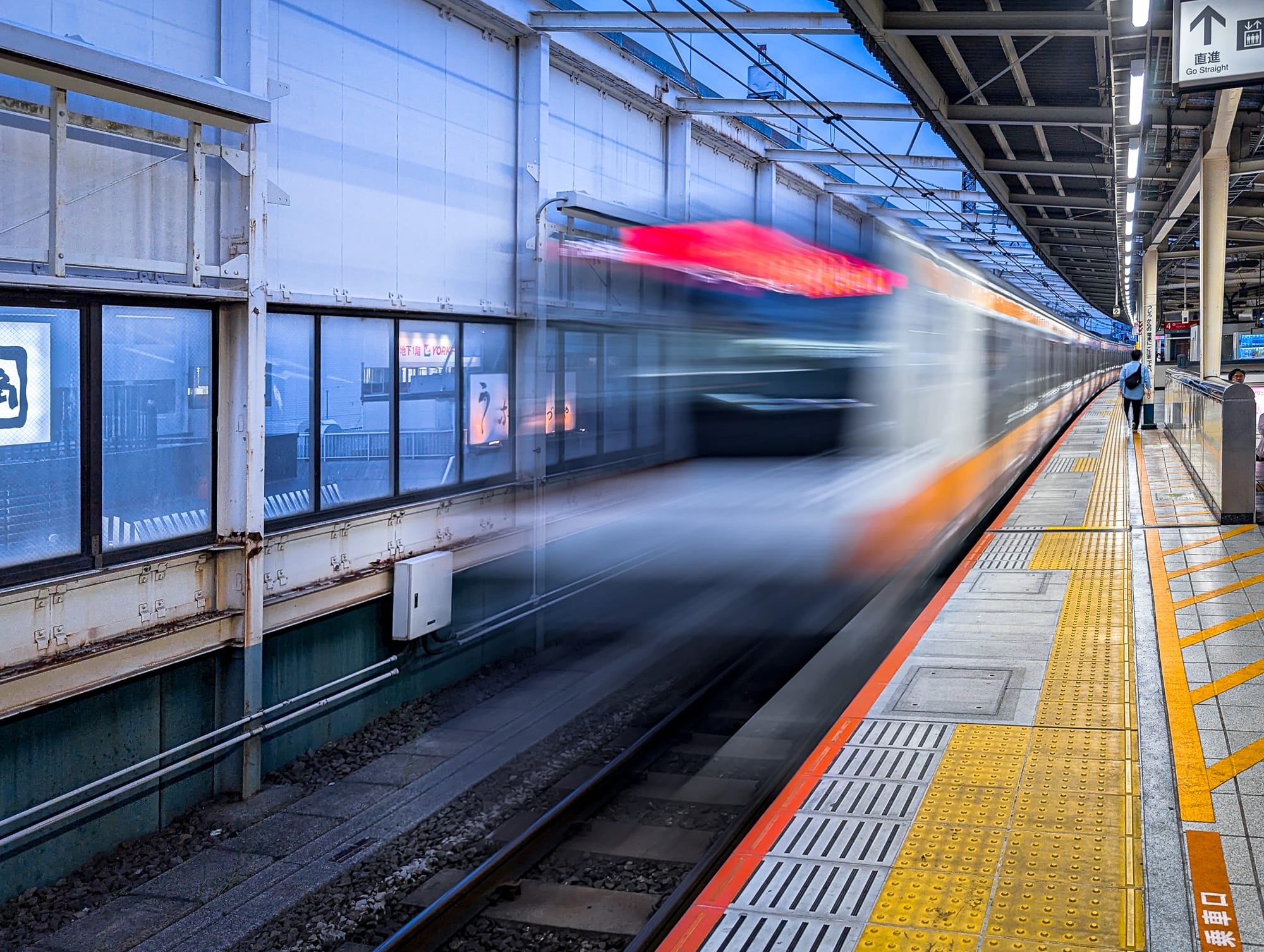
This week's newsletter comes to you directly from the Chūō Line, the vagus nerve of Tokyo's rail network. Some explanation is necessary to appreciate this train line's full complexity: the Chūō-Sōbu Line, recognised by its yellow train cars and signage, operates parallel to two significant railways. Firstly, the blue Chūō Main Line stretches west from Tokyo Station to Nagoya, while to the east, the similarly blue Sōbu Main Line extends to Chōshi, a coastal city at the easternmost tip of the Greater Tokyo area. The Chūō-Sōbu Line also bridges a section from Tachikawa in the west to Tokyo Station, where the two main lines diverge.
The line transforms into vivid orange and becomes known as the Chūō Line (Rapid) when it omits eight minor stops and an additional three on weekends, which causes many an overshot journey. This rapid service is typically what is meant when referring to the Chūō Line, with the Chūō-Sōbu Line being dubbed the Chūō Line (Local) since it serves the smaller local stations that the rapid version skips. This evening finds me on the Chūō Line's Special Rapid service, which forgoes an additional ten stops as it hurtles toward Tokyo. Adding to the complexity, the rapid line branches into three locations on the west side, including the mountainous areas of Ōme, Takao and Itsukaichi, while the Tokyo Metro's Tōzai Line overlaps with the Chūō-Sōbu Line's route between Mitaka and Nakano. Additionally, there's a Commuter Rapid and a Commuter Special Rapid that even bypasses Nakano and Mitaka, offering a direct link from Shinjuku to the residential city of Kokubunji.
Spanning 60.2 km, the Chūō-Sōbu Line and its rapid variants serve the Tokyo Metropolitan Area exclusively, slicing through the Yamanote Line, which encircles central Tokyo. This formidable infrastructure is a familiar setting for me, and it's a pleasure to be aboard once again. Yet, the Special Rapid's swift journey means my stop is imminent. This rapid transit mirrors the pace of my initial week in Tokyo—a fusion of work, travel, and connections with friends and family interspersed with urban exploration. Consequently, this week's newsletter presents three short pieces conceived during fleeting moments of respite, whether on the move like I am now or pausing in cafés and restaurants. This edition diverges from our norm; it features less extensive research and fewer citations. For newcomers to Tokyothèque, revisiting a prior edition might provide a clearer picture of the newsletter's typical style.
This is a members-only post
Join now to finish reading and access the full Tokyothèque archive.
